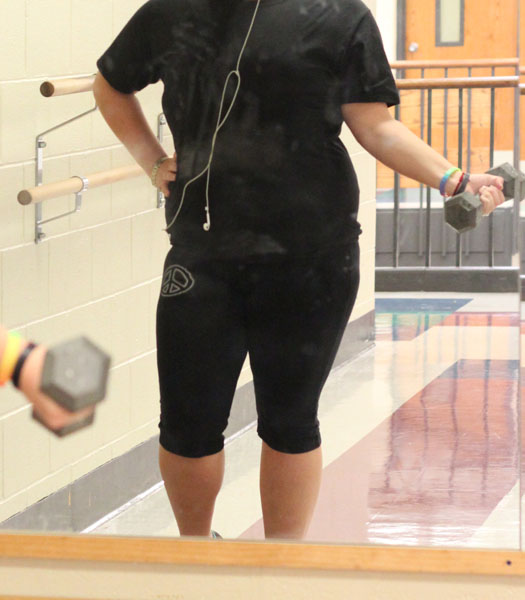The Media Effect
Popular culture can affect a teenager’s self image

Teenagers often try to work out to fit the traditional body image presented by popular culture
September 18, 2013
Thigh gaps and six packs. Flat stomachs and bulging muscles.
Anyone who has ever watched a popular television show or looked at the cover of a magazine would know these attributes hold high value in our society.
But are these expectations realistic?
Junior Rachel Vaccaro does not think so.
“Everybody’s body shape is so different that having one image for everybody is completely impossible.” Vaccaro said.
From the media to childhood toys, the problem seems to be everywhere.
“When [teenagers] see people in the newspapers and magazines and on TV, they feel like they should look like them,” social worker Karen Coughlin said, “and often times those people are air brushed, and that is not actually how they look.”
According to dosomething.org, “95 percent of people with eating disorders are between the ages of 12 and 25.” However, “Only 10 percent of people suffering from an eating disorder will seek professional help.”
While it may be seen as a primarily female issue, that is hardly the truth.
“I think males are less likely to come forward, because it’s not as socially acceptable,” Coughlin said.
According to the National Association of Anorexia Nervosa and Associated Disorders (ANAD), it is estimated that 10 percent to 15 percent of people suffering from Anorexia and Bulimia are male.
“The worst thing that popular culture has done? It is probably just made teenagers very uncomfortable with themselves, and they always feel insufficient,” Coughlin said. “It impacts their relationships, and that continues into adulthood; how they relate to others and just their general self confidence, it all trickles in.”
But where do these body image ideals come from? And how do they affect the culture surrounding teenagers today?
“I think it is a mixture of the media playing into those people seeing it,” Vacarro said. “You grew up with the Barbies, or the Bratz dolls, where they were thinner, with the thigh gap, or the bigger bust, or whatever.”
How do people change the culture? Do people start by changing media, or do people start by changing themselves?
“Everybody be their own person and not follow what somebody else is doing,” senior Xavier Williams said.
It is more than just weight, that media obsesses over, though. People need the right hair type, the right hair style, the right skin tone, and the right clothes. For most people, the expectations set by popular culture are impossible to reach. Most genetic codes do not line up
“When they show people in magazines, they always make sure it is the thin model who has the perfect tan, no tan lines, no this, no that,” Vacarro said. “So no matter how they really look, whether they have the tan lines or the not so perfect body, the media will make sure they look the way [the magazine] wants them to.”
“Everybody’s not perfect,” Walking Counselor Jamel McCaine said. “But you know what is perfect? Being who you are.”


